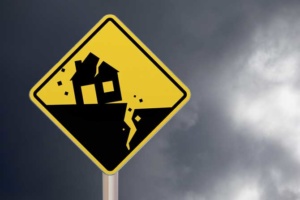 Researchers hope to use networks of unused, dark fiber optic cables to help detect underground sound waves that can warn of an impending earthquake.
Researchers hope to use networks of unused, dark fiber optic cables to help detect underground sound waves that can warn of an impending earthquake.
Millions of miles of unused, dark fiber optic cables are installed underground. A research team of scientists from the University of California (Berkeley) and Lawrence Berkeley National Lab have been experimenting with a new predictive technique. This method may gather measurements of movement in the Earth’s crust that are superior to those obtained by current seismic detection systems.
Measuring Activity
In seismology, scientists often have only a small number of sensors to use in detecting earthquakes. This is one reason why measuring vibrations through the Earth’s surface is an uneven, “touch-and-go” venture. Also, some seismically-active areas have many sensors on hand, while places distant from shifting tectonic plates may have very few. This variation in equipment can make it tough to measure seismic vibrations in places where, for example, fracking triggers earthquakes. Using the new method, users could turn each fiber optic cable length of a few feet into an individual seismic sensor.
In this new experiment, the research team “borrowed” from other groups who have developed distributed acoustic sensing (DAS) methods. In DAS, laser pulses are used to detect minute vibrations along optical fiber/cable. Researchers insert units called interrogators along the optical fiber/cable. These interrogator units send out and sense short infrared laser pulses. Triggered by seismic activity, tiny strains on the optical fibers cause some of the laser light to be reflected and then bounced back to the sensor. By sending rapid pulses, the scientists can detect changes in the light scattering over time. By knowing the speed of light, they can pinpoint where the activity occurred.
“Real World” Testing
With this latest technique, the researchers essentially tested the DAS method in the real world. They plugged their interrogators into the fiber optic cable line along the Department of Energy’s Dark Fiber Testbed. This 13,000-mile stretch of telecommunications fiber in the western U.S. is used for testing new communications equipment. The researchers targeted a 17-mile cable segment near West Sacramento, California, and recorded data from July 28, 2017, up to January 18, 2018.
The research team successfully recorded information on the speed of sound waves traveling through the Earth. In fact, during September 2017, they detected and measured the massive 8.1 magnitude earthquake in Mexico (the strongest quake to hit Mexico in a century).
Unfortunately, this detection technique isn’t ready to be used beyond research. But keep an eye open for possible use in the future!
Tags: dark fiber, Fiber Optic Cable Articles | OFS Optics, seismic activity

